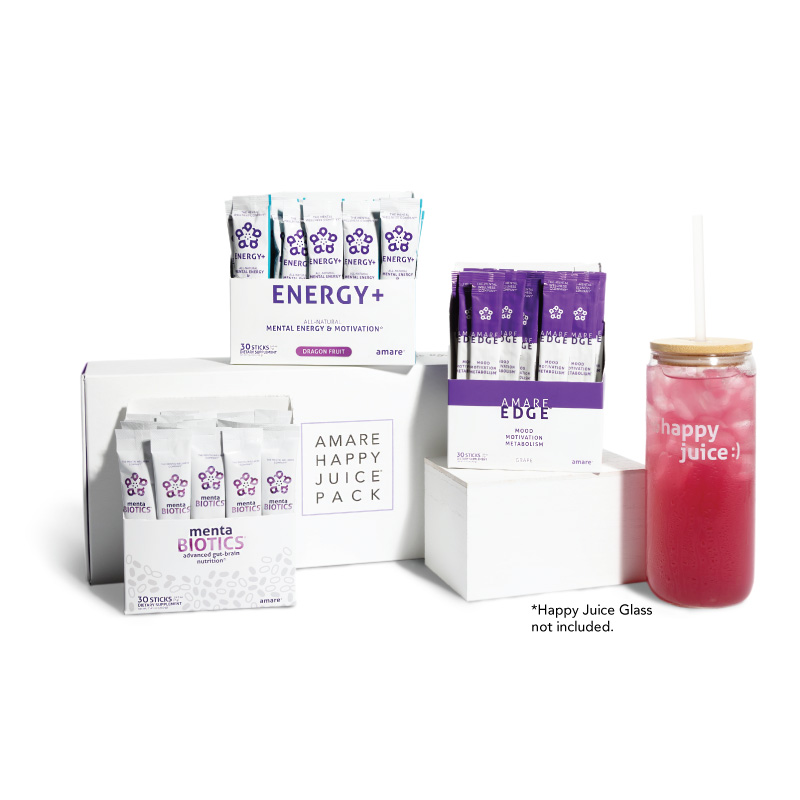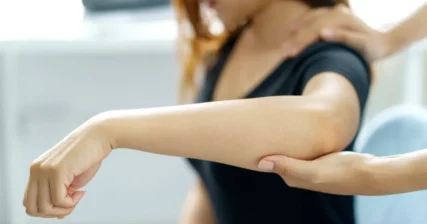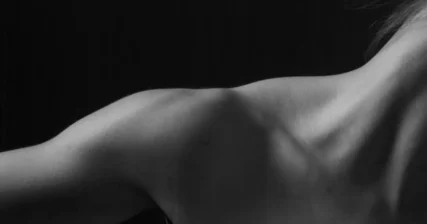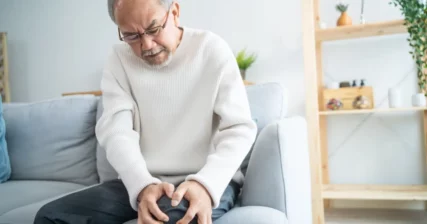Listen on: Apple Podcasts | Spotify
It was a warm summer morning, July 30. Vanessa, our grandson Asher, and I were riding a single-track mountain bike course in Woodbury, MN. As always, I rode in the third position, ironically, in the event either of them ever had a bad fall.
I came upon a skinny bridge about three feet off the ground and, for a brief moment, thought I should skip it that day. I didn’t listen to my intuition.
Instead, I slowly pedaled up the steep incline. As my front tire reached the top, I knew I needed to follow the bridge’s curve to the right, but I was going so slow I couldn’t correct myself. Instead, I kept riding straight ahead.
Before I could blink, my front tire dropped off the bridge, and when it hit the ground, I was leaning forward enough that the only thing that could happen was for my body and the back of my bike to fly over the front.
The top of my head made contact with the ground first, the rest of my body directly above it. As our grandson would later describe, my head then got squished into my shoulders, my neck hyperextended, and the rest of my body rolled over until I lay flat on my back.
Within seconds, I realized I had no feeling in my lower body. I knew this would be a severe injury. I also felt surprisingly calm, knowing things would work out according to God’s plan, whatever that might be. As she’d later tell me, Vanessa felt at peace in the chaos as well.
The police and fire department arrived 15 minutes after my wife called 911. They gave me ketamine, carried me to an ATV, loaded me onto the back, drove me to an ambulance, gave me fentanyl, and drove me to Regions Hospital in St. Paul, Minnesota.
This is an introductory post about my adventure back from a serious spinal cord injury. I’ll refer back to it in future posts as I discuss the therapies we use and the insights we gain. Here, I want to outline the complications we faced, as it turned out to be more than a broken neck or a spinal cord injury alone. Also, my wife, Vanessa Romero has documented, and will continue to document, our approach to recovery and its milestones on her Facebook and Instagram pages. Please check them out!
The Diagnosis
Upon arriving at Regions, the staff ushered me into X-rays, CT scans, and MRIs.
According to my admission notes, I had:
- C6-C7 fracture dislocation with bilateral facet fractures, unilateral perched facet.
- Severe degenerative disc disease at C5-C6 with severe secondary spinal stenosis (narrowing of the spinal canal).
- Spinal cord injury with central cord syndrome at C5-C6 and C6-C7.
Based on the degenerated discs and bone spurs he saw, the surgeon told Vanessa I was a walking disaster, even if I hadn’t broken my neck. He said I was lucky the crash hadn’t made me a quadriplegic. We call it a blessing.
The surgery team told her I would likely be in the hospital for 10 to 12 days. They even said it would be a few days before I could walk.
The surgeon, Dr. Mendes, wanted to do immediate, emergency surgery. As he noted:
Because of instability, the unstable nature of fracture, dislocation at C6-C7, surgery was immediately recommended because of the severe compression at C5-C6.
So, by late afternoon I was headed for surgery. I don’t remember much about that afternoon as I was pretty drugged up.
The Surgery
Dr. Mendes, the neurosurgeon, performed a two-level anterior cervical diskectomy and fusion (ACDF). This was to reduce the compression and flattening of my spinal cord, caused by the fractured vertebrae, existing disc degeneration, and bone spurs.
If you geek out at this stuff, here are the notes from my surgeon on my procedure.
PROCEDURE IN DETAIL: The patient was anesthetized, intubated, and placed supine on the OR table, roll underneath his shoulder blades, head in mild extension, head resting on a foam donut.
Gardner-Wells tongs were applied approximately an inch in front of the external auditory meatus to reinforce this lordotic positioning. Continuous traction weight of 20 pounds was applied.
Cross-table fluoroscopy to mark the levels of interest. Skin prepped and draped in the usual sterile fashion. Lidocaine 1% with epinephrine to skin.
Oblique incision following a skin line with exposure of platysma, which was dissected along its fibers. Then, I developed a plane in front of the sternocleidomastoid and in front of the carotid sheath, lateral to the trachea and esophagus, exposing the deep cervical fascia which was opened sharply.
The longus colli detached and self-retraining retractors were placed over here. Fluoroscopy was used to mark the levels of interest.
I then proceeded 1st to work at C5-6. The disk was entered with a 15 bladed knife and I used a straight curette to detach this very tall disk from the endplates and remove all the cartilaginous endplate from the bone preserving most of the cortical bone here. Then, with a Midas drill using a 5 mm round drill, I took out the anterior marginal osteophytes as well as flattened the endplates and took the posterior marginal osteophytes as well as the posterior aspect of the uncinate process of C7. I could see a central disk herniation through the posterior longitudinal ligament. This was removed with a micro pituitary rongeur and I opened the PLL with upbiting micro curettes and Kerrison rongeurs, exposing the takeoff of C7 bilaterally. I did a wide foraminotomy bilaterally, so that the root could move anteriorly to avoid compression by the bone fragment from behind. I could feel distally with no evidence of residual foraminal stenosis.
At this point, we released the traction to 15 pounds and measured the gap and chose to use an 8 mm large Titan cage. I prepared the endplates with a rasp. I then proceeded to put the cage, countersunk a couple of millimeters. This cage was filled with 2 mL of DBX from Medtronic. Then, I repeated exactly the same process at C5-6, over here it was a very collapsed segment with a large marginal anterior osteophyte that was drilled down. I worked taking down the disk and then the posterior marginal osteophytes. These were extraordinarily large and actually after drilling through it, I gently resected them with upbiting curettes until the thecal sac appeared fully decompressed. Bilateral anterior foraminotomy completed in the same fashion at the level below. I finished preparing the endplates and same way with a rasp and then placed a 7 mm large Titan cage filled with DBX. I placed more DBX on the side of the cage and measured the gap between 5 and 7, chosen to use a 45 mm Atlantis plate. This was bent to maximize lordosis. I secured this plate 1st with the screws at C6 and then released completely the traction and put the screws at C5 and then C7 with excellent bony purchase, this gentleman has excellent bone quality.
At this point, I copiously irrigated the field. Careful hemostasis was done. I placed Gelfoam on top of the plate and then on top of this, a 7-French round JP drain externalized through the platysma through the lateral aspect of the wound. The wound was then closed in layers using Vicryl 3-0 for platysma and subcuticular-subcutaneous Dermabond to skin. The drain was secured on the lateral aspect of the wound with the same 3-0 Vicryl. The wounds were dressed.
The Gardner-Well tongs were then removed. He was then returned to his gurney, where he was well woken up, extubated, and taken stable to PAR. Here, he was noted to be neurologically at his same level to that preoperative. Procedure well tolerated. No apparent complications. Needle and sponge counts correct and verified at the end of the case.
We also found this video to be interesting. Our seven year old grandson even liked it, as it helped him understand what they did in the hospital.
Post-Surgery Recovery
The following are the main recovery challenges we’ll come back to in future posts, with working through Central Cord Syndrome being the biggest challenge to overcome.
Bone Healing (Fractures and Fusion)
For the ACDF, the bones need to fuse to the installed hardware, and the bone matrix needs to solidify. That’s pretty straightforward and can take 6-12 months for complete healing.
As you’ll see in future posts, I’m using supplements and alternative therapies to speed up the process.
Neck Muscle Rehab
The longer I’m in an Aspen Collar, the weaker my neck muscles will become. I’ll do all that I can to get a green light to lose the collar, but even while I’m in it, I’m taking small steps to maintain some muscle tone in my neck.
Central Cord Syndrome
Central cord syndrome is the main issue I’m dealing with after surgery.
The National Institute of Neurological Disorders and Stroke defines Central Cord Syndrome as follows:
Central cord syndrome is the most common form of incomplete spinal cord injury characterized by impairment in the arms and hands and to a lesser extent in the legs. The brain’s ability to send and receive signals to and from parts of the body below the site of injury is reduced but not entirely blocked. This syndrome is associated with damage to the large nerve fibers that carry information directly from the cerebral cortex to the spinal cord. These nerves are particularly important for hand and arm function. Symptoms may include paralysis or loss of fine control of movements in the arms and hands, with relatively less impairment of leg movements. Sensory loss below the site of the injury and loss of bladder control may also occur, as well as painful sensations such as tinging, burning, or dull ache. The overall amount and type of functional loss is dependent upon the severity of nerve damage. Central cord syndrome is usually the result of trauma that causes damage to the vertebrae in the neck or herniation of the vertebral discs. It also may develop in persons over the age of 50 due to gradual weakening of the vertebrae and discs, which narrows the spinal column and may contribute to compression of the spinal cord when the neck is hyper-extended.
At the time of this writing, two weeks after my injury, I’m dealing with:
- Strange senses throughout my body. For example, when I walked into our community pool, I could not tell whether the water was warm or cold. I had no sense of the temperature, though the water movement across my skin caused a strong, dull pain. On the other hand, when I took a shower the other day, one leg felt like the water was ice cold while the other felt like the water was nice and hot.
- Almost constant pain from my elbows to my finger tips. I do get a reprieve when Vanessa applies a couple of different essential oil blends and heat, which I’ll reference in a future article. Cold exacerbates the pain. When Vanessa put a TENS unit electrode on my back the other day, the cool pad felt like a horse kicked me in the spine.
- Significant upper body weakness, most pronounced in my hands, but also affecting my triceps, pecs, serratus, levator, and a number of other upper body muscles, along with the bladder and sex organs.
- Poor fine motor control. For example, I’m typing this on my computer at a typing rate that’s a fraction of my norm, as my fingers don’t work like they’re supposed to yet.
Here’s why I felt it was essential to lay out the details above:
People may think they have a solution to my current challenges without understanding what’s causing them. They may also think that others in a similar situation would benefit from stuff that really won’t work. By understanding the problem first, it’s easier to understand what will or won’t work to help fix it.
A personal trainer may think the solution to my muscle weakness is that I need to build strength and muscle mass. However, I already have that. I don’t currently have a nervous system communicating with my muscles to fire, not a lack of muscular strength.
A natural products enthusiast may think that the nerve pain can be resolved by the same solution that cured someone’s nerve pain stemming from carpal tunnel, diabetic neuropathy, or severe burns. They don’t understand that Central Cord Syndrome causes pain for different reasons.
With this as a thorough background, it will make the future posts on the therapies we’ve used make more sense.
I would not have chosen to be in the midst of this situation, but since I’m here, I plan to make the most of it. I hope that I’ll be able to use by accident, surgery, and recovery process, as a way to help others think through their approach to similar injuries.
I also hope that this helps encourage others to the reality that they can recover much faster than average if they’re willing to do more than the average is willing to do.
Finally, let me wrap up this first post with two more points:
- The muscle and fitness I had going into the injury played a role in limiting the damage done and in speeding up the recovery process after. I will use this as yet another reason to adamantly encourage middle-aged and older men to build strength and muscle, and not let their excuses get in the way of their fitness.
- No doubt, God has been there all along. He was probably the one who whispered into my heart to skip the bridge that day, and when I didn’t listen, to at least keep my neck from turning as it got compressed. And He’s shown Himself in a way I’ve never experienced, through the messages, prayers, and gifts, and services others have poured upon us during this time.
I hope you have both God and your fitness to protect you when you find yourself with surprise injuries or illnesses.

Feel Better Fast. Guaranteed.
Energy+, EDGE, and MentaBiotics make up the Happy Juice supplement stack, with ingredients clinically proven to:
- decrease anxiousness scores by 55%
- decrease irritability scores by 60%
- decrease fatigue by 64%
- decrease anger 54%
- decrease tension by 45%
- decrease confusion by 43%
- decrease overall distress by 49%
- increase good bacteria by 70%
- decrease negative mood by 105%
- increase positive mood by 211%



